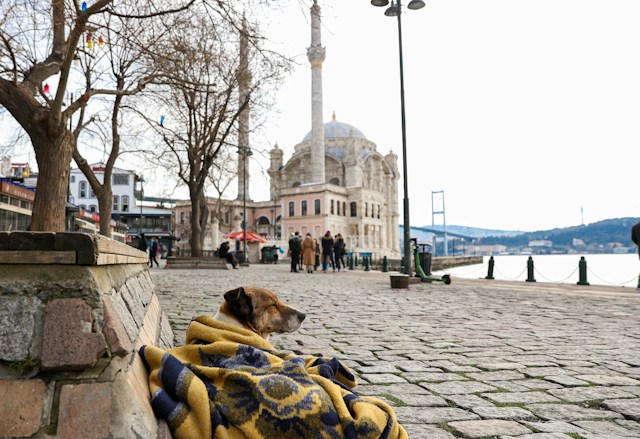How to Safely Rehabilitate a Dog After Orthopedic Surgery?

As a pet owner, when your beloved dog undergoes an orthopedic surgery, it can be quite an emotional ordeal. Not only does it demand a significant commitment of time and resources, but it also requires you to step up as the primary caregiver during the recovery period. The post-surgery phase is critical and how you handle your dog’s rehabilitation will significantly impact their recovery speed and success. In this comprehensive guide, we will walk you through the process of safely helping your pet regain full mobility and vitality after an orthopedic surgery.
Understanding the Importance of Rehabilitation
The first step towards effectively helping your dog recover is understanding the significance of post-surgery rehabilitation. After an orthopedic surgery, your dog’s body will need time to heal. During this period, your dog might experience some level of discomfort or pain, which can be managed with appropriate therapy and care.
A lire en complément : Choosing a pet: Factors to consider
Rehabilitation will help your dog regain strength and flexibility in the joints, reducing the risk of future injuries. It also helps your pet regain confidence and the ability to perform daily activities independently.
The speed of recovery varies from one patient to another depending on factors such as age, breed, overall health status, and the complexity of the surgery. As a rule of thumb, younger and healthier dogs generally recover faster. However, with your commitment and the right approach to rehabilitation, even older dogs can make a great recovery.
Sujet a lire : How to Manage Chronic Kidney Disease in Aging Cats?
Role of the Veterinary Team in Rehabilitation
While you play a significant part in your dog’s recovery, it’s also crucial to work closely with your veterinary team. They are the professionals who will guide you through the rehabilitation process, offering critical advice based on the specifics of your dog’s condition and surgery.
Your vet will create a detailed rehabilitation plan, which may include physical therapy sessions, pain management, and a diet plan to support recovery. Regular check-ups will also be scheduled to monitor your dog’s progress and make any necessary adjustments to the rehabilitation plan.
Remember, every surgical procedure is different, and hence, post-operative care will vary. Your vet will provide guidelines tailored to your dog’s specific needs.
Engaging Your Dog in Physical Therapy
Physical therapy plays a pivotal role in speeding up recovery after orthopedic surgery. The therapy sessions will help your dog regain joint flexibility, strength, and overall physical endurance.
Depending on the type of surgery and your dog’s condition, physical therapy might include exercises such as controlled walking, stair climbing, balance activities, and swimming. Your vet may also prescribe specific exercises to be performed at home.
While engaging your dog in physical therapy, it’s crucial to be patient and persistent. Start slow and gradually increase the intensity as your dog’s strength improves. Always keep in mind that forcing your dog to exercise beyond their comfort level can do more harm than good.
Administering Appropriate Pain Management
Post-operative pain is an inevitable part of the recovery process, but it can be managed effectively with appropriate medication and care. Your vet will prescribe pain medications to help your dog cope with the discomfort after surgery.
It’s crucial to administer these drugs as directed by the vet to ensure your pet’s comfort. Never adjust the dosage or frequency without consulting your vet. Besides medication, certain therapies like cold or heat therapy can also help alleviate pain and swelling.
Essential Care Tips for Faster Recovery
Taking care of your dog after orthopedic surgery goes beyond administering medication and engaging in physical therapy. There are other essential care tips that can help accelerate recovery.
Ensure your pet is getting a balanced diet rich in proteins and vitamins to support tissue repair and recovery. Hydration is equally important, so always provide fresh water.
Additionally, limit your dog’s activity level to prevent putting undue stress on the healing joint. You may need to assist your dog in moving around, especially in the initial stages of recovery. Lastly, shower your pet with love and affection. Emotional support can work wonders in speeding up recovery.
Helping your dog recover from orthopedic surgery can be demanding, but remember, your efforts will significantly contribute to your pet’s healing. Don’t hesitate to seek help and advice from your vet whenever you’re uncertain. With the right balance of professional veterinary care and your dedicated efforts at home, your furry friend will be back on their feet in no time.
The Role of Controlled Exercise and Crate Rest in Rehabilitation
After orthopedic surgery, controlled exercise and crate rest are vital elements in your dog’s rehabilitation. It is crucial to understand that controlled exercise is different from regular exercise. Controlled exercise involves specific movements aimed at improving range of motion and strength in the affected areas. Your vet may introduce exercises that are designed to engage your dog’s muscles without putting excessive strain on the healing areas.
Crate rest, on the other hand, involves limiting your dog’s activity to a confined space, a crate, for a majority of the time. This practice aids in preventing your dog from overexerting and potentially causing damage to the healing joints or ligaments. It’s especially relevant for dogs recovering from cranial cruciate ligament (CCL) surgeries or similar orthopedic procedures.
While the idea of crate rest may seem harsh, it’s a critically important part of the rehabilitation process. Being confined to a crate, your dog is prevented from jumping, running, or engaging in any activity that might impede the recovery process. Remember, crate rest is temporary and a necessary step towards a full recovery. You can make the crate more comfortable by adding your dog’s favorite toys or a cozy blanket.
Canine Rehabilitation and the Use of Therapeutic Modalities
Canine rehabilitation is a specialized field in veterinary medicine that focuses on physical rehabilitation and pain relief for dogs. This discipline incorporates various therapeutic modalities, including hydrotherapy, massage therapy, laser therapy, and more. These treatments can aid in improving your dog’s mobility, reducing pain, and speeding up recovery after orthopedic surgery.
For instance, hydrotherapy (water therapy) is often recommended as it allows dogs to exercise without bearing their full weight. This therapy is particularly beneficial for dogs that have undergone surgery on weight-bearing joints, such as the hip or knee.
Laser therapy is another modality used in canine rehabilitation. It uses light to stimulate cell regeneration and increase blood circulation, which aids in wound healing and soft tissue repair.
Despite the advancement in therapeutic modalities, it’s crucial to note that not every dog may require or benefit from these therapies. The choice of therapy will depend on your dog’s specific condition and needs, as well as the advice of the veterinary team.
Conclusion
Rehabilitating your dog after orthopedic surgery can be a challenging journey, filled with lots of care, patience, and dedication. From understanding the importance of rehabilitation, working with the veterinary team, incorporating physical therapy, to administering pain relief, every step is crucial towards your dog’s recovery.
Remember, the journey doesn’t end in the vet’s office. Home care, proper nutrition, controlled exercise, crate rest, and possibly canine rehabilitation are equally important. Each dog recovers differently, so don’t be disheartened if your pet’s progress seems slower than expected. Your unwavering love, coupled with professional vet care, will help your furry friend regain their zest for life.
